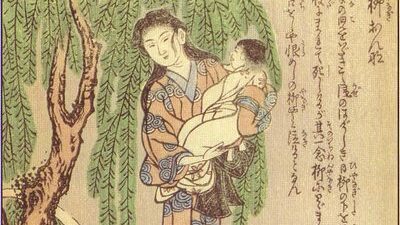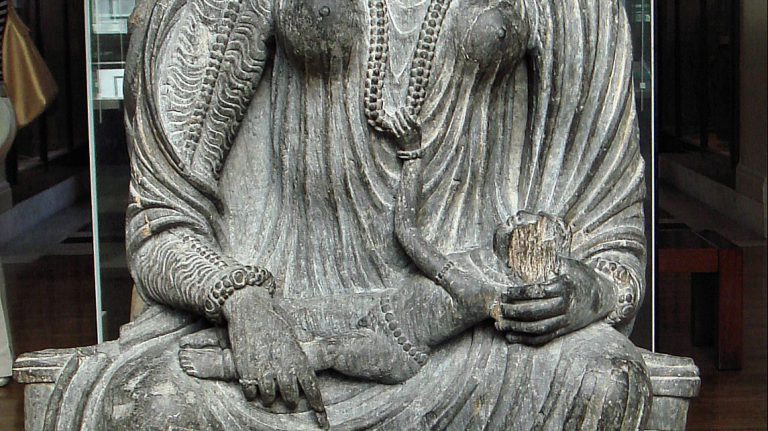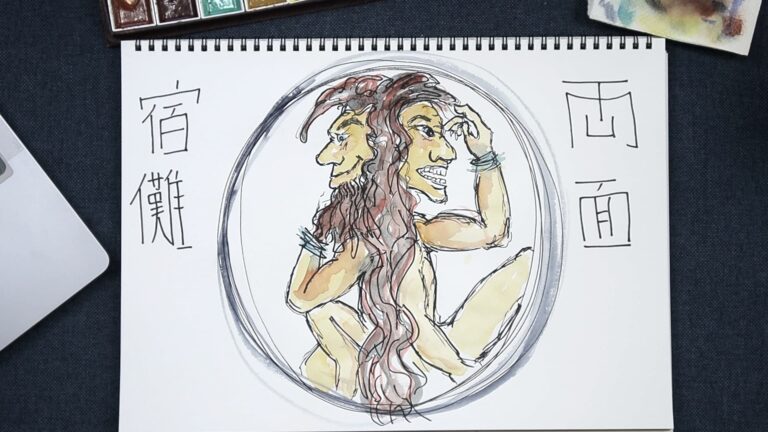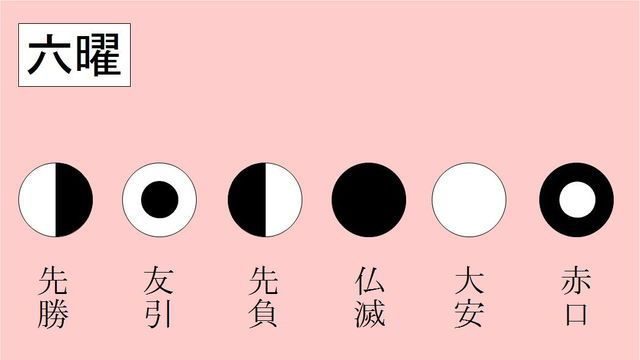This is Thersa Matsuura and you’re listening to Uncanny Japan.
Another Nanafushigi-Abe no Seimei
Okay, I’m sorta on a roll. After the last episode about “The Wave Boy” nami kozō, I thought to myself, while I’m at it, why not do another local nana fushigi, Seven Mysterious Things? Especially since it’s about Abe no Seimei and I mentioned I’d talk more about him a couple episodes ago.
To tell you the truth, I was always intimidated by this bigger than life historical and legendary figure. I didn’t know how to even start going about studying him. But there’s a chapter on him in the upcoming book, so I dove in and learned he’s just a gem and a half, and you could probably spend your whole life reading about him and still not learn it all. I mean he was born in 921 CE. That’s 1,103 years ago, a very long time for myths to sprout and grow, and evolve. But also there was so much written about him and by him at the time he was alive that’s still out there.
Today let me tell you a little bit about this wild, prognosticating, magic wielding wonder and the time he visited a village not too far from where I live. And what he did there.
Intro
Hey hey how are you? How’s 2024 treating you? Hopefully well. A reminder about The Book of Japanese Folklore by me, Thersa Matsuura and that it’s available for preorder. And there’s a free recorded short folktale (again, by me) if you do preorder. Just shoot me a screenshot at thebookofJapanesefolklore@gmail.com and I’ll get that to you. Patrons who buy the book, you’re getting a signed bookplate and bookmark that I designed and made. I’m working on those now and want to mail them out before the book actually comes out, which is April 30th. They’ll be fun.
Oh! The other day I accidently discovered the book was number one in Literature Encyclopedias. Which was: Oh my gosh! That lasted a couple days. Then it fell off for a week. Then on for a day. Off again. Anyway, thank all of you for ordering. I mean those copies can’t all be my mom, can they?
On to today’s show.
Abe no Seimei Early Years
So a bit of background about Abe no Seimei. He was born Dojimaru in 921 CE to a father who was a really nice guy – demonstrated by the fact that one day saved a fox from hunters. A fox he later ended up marrying.
FYI, she had transformed into a woman by that point, you weirdo. I’m guessing he didn’t know she was a fox. But he did know later when little Dojimaru outed her by accidentally walking in and seeing her in fox form which caused her to leave the family. Because that’s the fox law.
Her name was Kuzunoha – by the way. The leaf of a kudzu plant. I like that.
Anyway, she returned to the forest. But the family did meet at least once again in those same woods where she gave her son some magical implements from the Fox God, Inari Daimyōjin.
What is an Onmyoji
Abe no Seimei was born. As a young man, he ended up working for the Heian Imperial Court as an onmyōji. Onmyoji – practitioners of onmyodo (the way of Ying and Yang) were an eclectic mix of astrologer, diviner, geomancer, magician with real magical powers, etc. etc. It mixes Taoism, Buddhism, Confucianism, and much much more.
Abe no Seimei was no doubt the most powerful onmyoji ever. There are so many stories, both true and wildly legendary about the man. That’s where it’s hard to know where to start talking about him.
How about three noteworthy things?
- He employed the strongest shikigami. What’s a shikigami? Well, shikigami are creatures or spirits that you find mentioned in onmyodo a lot. There are some heavy occult vibes when you read that they’re summoned by the onmyoji through various rituals and spells. Then they are controlled to do their master’s bidding. They can appear as various things, animals, evil looking oni dudes, or white paper cutouts. In artwork you’ll see them depicted as a child or bird. But they can also remain in spirit form.
If the onmyoji is powerful, like Abe no Seimei, he can order them to even possess other animals or people. They’re dangerous, though, if you’re not a strong onmyoji and don’t know what you’re doing, because they can turn on you. Some things shikigami can do is spy on an enemy, track and find enemy, and steal. Abe no Seimei’s shikigami were top notch. Everyone agrees.
- He could dissipate or vanish someone else’s shikigami. Remember all onmyoji who were strong enough could conjure these otherworldly creatures. But Abe no Seimei could go poof! And yours would be extinguished.
One story tells of an old monk who visited Abe no Seimei with two children. He expressed interest in learning onmyodo from the master himself. But Abe no Seimei sensed something was off. Ha! He said and with a wave of his hands and some magic incantation, he disappeared the two children who were actually shikigami. Let’s hope they were shikigami.
- When he was very young he witnessed the hygakki yagyo or demon hordes night parade or 100 demons night parade. Abe no Seimei said that most people can’t even see these monsters even if they are right in front of them, even after years of training. But Abe no Seimei had the natural ability, even as a child.
Ashiya Dōman
Another thing Abe no Seimei is famous for is his ongoing rivalry with an onmyoji named Ashiya Doman or Dōman Hōshi. He was quite a bit older and wasn’t as just and good as Abe no Seimei. It’s said he learned all these practices by secretly reading and being taught by a daoist sage. At least that’s what he claimed. He even said he was a disciple of the sage, taking the character dō from his master’s name when he came up with Doman. Also the same character for daoism, by the way. Doman studied Buddhism, too. But evidently had an arrogant, unscrupulous character. That said, he did excel in divination and sometimes displayed supernatural abilities. He was so full of himself he thought he was the best onmyoji in the world.
That is until along came a young upstart, Abe no Seimei. Abe no Seimei at a very young age diagnosed the Emperor’s illness and received an official position inside the Heian court. Something Doman didn’t have. This made the older onmyoji crazy jealous and thus the rivalry was born.
There are loads of stories and legends about these two, but a well known one is how while Abe no Seimei was in China studying for three years, Ashiya Doman had an affair with his wife who is simply and mysteriously known as Rika.
One Legend
One night Doman was having a little pillow talk with Rika and asked about what Abe no Seimei was studying in China? She said she didn’t know anything about all that, but he did have a four inch square gold box and a five inch square sandalwood box locked inside a chest inside a storage room.
Doman pleaded with her to show him the boxes. Which she did. He couldn’t open them though. Well, not at first, then he performed a little magic and the lids opened, revealing two magical texts. Doman wasted no time copying both books, then replacing the originals.
Seimei eventually returned to Japan. One night after a banquet, while quite drunk, he laid down to rest. Who was to sweep into the room, but Ashiya Dōman. Doman goes and tells his frenemy about a dream he had where he visited China and met Manjushri Bodhisattva on Mount Wutai. While there he was given two sacred magical texts.
Seimei dismissed this and said that dreams are just an illusion created by a confused mind. Even if you gain fortune in a dream, when you wake up it’s gone. Sages don’t dream, he said.
But Doman mentioned some biggies like the Buddha himself who did report having dreams.
Seimei said what I meant was: It’s not that they don’t dream, it’s that they don’t have dreams of delusion like you, Doman, and your delusional dream about the sacred texts. All you care about is fame and fortune. You can never experience what a sage experiences.
Meow!
This rightly infuriated Doman. He said, well if you know everything, why don’t we have a bet about whether or not I have in my possession the texts.
Seimei, still drunk, mind you, laughed and very carelessly said, “Yes, Lets! Let’s bet this head of mine!”
Doman then whipped out the two books he’d transcribed, showed them to Abe no Seimei, and then in the next instant, drew his sword and beheaded the greatest onmyoji right there in his own home!
Doman rejoiced. Now he could become Rika’s husband. Which is what he wanted all along. But funnily enough, the instant Seimei died all his servants dropped to the ground and became bunches straw and pieces of wood. Remember we talked about waraninygo in the last episode (nami kozo). Here they are again. But also shikigami no doubt.
Ashiya Doman wasn’t completely talentless. He performed a new ritual and turned them all back into people that would serve him and life went on as usual. Without the powerful Abe no Seimei in the picture. It’s said that Seimei’s head was buried secretly on the banks of the Kamo River at a place called Gojougawara.
One more really cool thing before I get into my local Abe no Seimei spot.
Se-man Do-man Charm
Let me tell you about the Seimei dōman charm.
Remember from two episodes ago when I talked about the five elements and how the pentagram both represented the gogyo and was a personal charm for Abe no Seimei? Well then. Ashiya Doman’s good luck symbol was a lattice image of five vertical lines with four horizontal lines drawn down through them. It looks like a grid. Although some versions have a differing number of lines and are still called the Doman charm.
Together these are called se-man, do-man.
Have you ever heard about the ama, women who dive for pearls in Mie Prefecture? These days they wear all white and freedive to impressive depths. They’re a tourist attraction, too. The tradition has been around for over two thousand years. Back in the day it was food they were looking for, not pearls.
As you can imagine, it’s a dangerous and difficult job. You want to have luck and the gods on your side. Shrines are built and offerings made, of course, but what’s really interesting is all the ama have embroidered in purple or black thread on their diving head tenugui and/or some other item of clothing or towel, the se-man do-man talisman.
It’s said to keep away evil and protect them. It also keeps them from being captured and being pulled into the Ryugujo or dragon palace or attacked by creatures that live in the sea. One of these beasties that was new to me is called the tomakazuki. This is an archaic word that kind of means the “same diver.”
While diving, deep in the shadowy depth of the ocean, you might be approached by another ama. But it’s not a friend, this one looks exactly like you! Your doppelganger! This lookalike will try to give you an abalone or lure you into some darker, deeper parts of the seabed. The se-man do-man will protect you from this scoundrel.
Why Does it Work?
The reasoning being, the pentagram is drawn by starting at a point and returning to it. So this represents the ama diving and returning safely home. It’s also completely sealed, so nothing bad can enter, like evil-doing monsters. If you’re looking at a piece of woven cloth, the name for the spaces between the threads in Japanese is ‘me’ or eye. Douman’s lattice charm has many of these “me” or eyes, which watch over the divers when they’re out at sea. Again, keeping them safe.
Shizuoka’s Local Legend
So while looking at the different nanafushigi in my neck of the woods I saw Abe no Seimei’s name. What?! He lived in Kyoto. The story, it turns out, is that not too far from me, in Kakegawa City, there is an Abe no Seimei mound. Or Seimei Zuka. Somewhere around a thousand years ago Abe no Seimei stopped by the area and visited a village that was occasionally devastated by tsunamis. He heard the villagers stories and felt so bad for them that he started praying fervently while stacking up some small red-colored stones. There were and have been no tsunamis in the area since. Knock on wood. Or stone.
The spot where he did his magic was marked by a memorial mound and became a place people visited to feel safe and pray.
I just went the other day and it’s quite nice. Not too far from the sea, surrounded by trees, there’s this large pile of all different-sized stones surrounded by a makeshift fence. There’s even a pentagram, too. I’ll put some photos up on the Uncanny Japan website and patreon.
So anyway, when people visited the mound – since tsunamis weren’t a problem anymore – they prayed not to be affected by any nasty disease or sweeping epidemics, like smallpox, measles, cholera, tuberculosis, you get the picture. That changed into wishing for anything at all. While there I saw one for someone who prayed that their kidneys would get better. Yes, some people write their wishes on the stones.
The usual routine though is after praying the person borrows one of the adzuki (yes, as in adzuki red bean)- colored stones and takes it home for good luck. Once the illness swept through and they and their loved ones were unharmed, or once they get whatever wish it is they wish, they return to the Seimei mound with two stones. The original one and second rock. Very important to return the stone plus one. You can’t just go around depleting this ancient magic. Give back.
The magical, nana fushigi, part isn’t just that the wish comes true, but that the second stone, no matter what color it was originally, turns adzuki bean red overnight. So that there was and still is a whole pile of red stones.
Okay, you’ll see in the photos, but while most of the rocks are reddish in color. Some aren’t. So it might take a little longer than overnight these days. I mean is has been over a thousand years since Abe no Seimei was here.
I’m not sure how many visitors go there now, but back in olden days when diseases ran rampant, people came from near and far to pray and borrow a rock for good luck or return two. Local elders in this area also believe as long as the Seimei no Zuka exists, they are protected from tsunamis.
Alrighty then, my friends, please consider becoming a patron. Did I tell you I’m recording The Carp-Faced Boy, too? I can’t remember. I am. With Richard at the audio, editing, and sound helm. He said his goal is for it to be ready at the same time The Book of Japanese Folklore is.
Stay safe and well, and I’ll talk to you all again in two weeks.







Hey Terrie, you said there would be pictures?
I’ll get you picture! Gomen 🙏 , been juggling so many things of late 💦